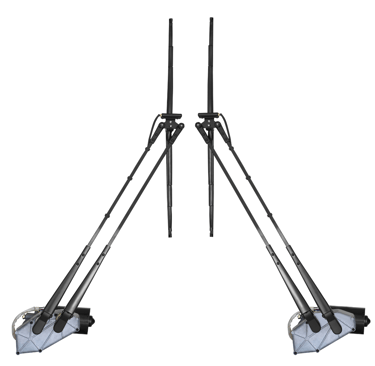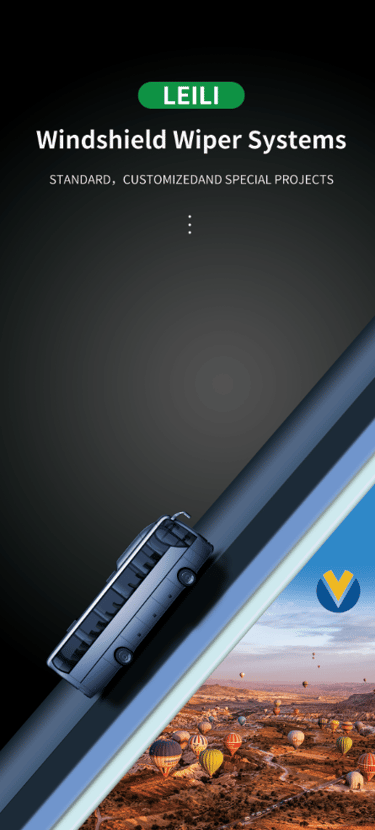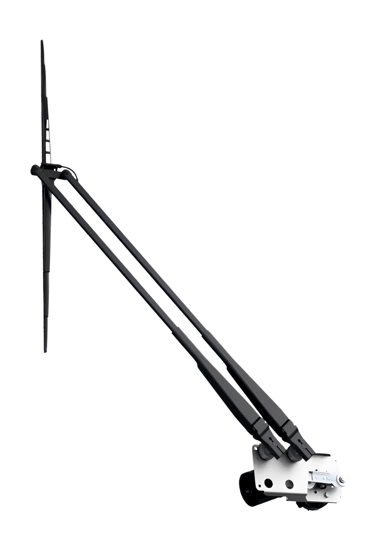How to Select Bus Wiper Blades: A Comprehensive Guide
Bus wiper blades are essential components that ensure optimal visibility for drivers, especially in adverse weather conditions. Selecting the right wiper blades for your bus is crucial for safety and performance. This guide will provide you with comprehensive information on how to choose the best wiper blades for your bus.
LEILI
Frank Tu
8/7/20243 min read
Understanding Wiper Blade Basics
Before diving into the selection process, it's essential to understand the fundamental components of a wiper blade:
· Blade arm: The part that connects to the wiper motor and moves back and forth across the windshield.
· Rubber blade: The rubber component that actually wipes away water and debris.
· Spoiler: A small lip at the top of the rubber blade that helps to press the blade against the windshield and prevent lifting.
Factors to Consider When Selecting Bus Wiper Blades
Size:
· Accurate measurement: The most crucial factor is ensuring the wiper blade is the correct size for your bus. Incorrect sizing can result in incomplete coverage, streaking, and potential damage to the windshield or wiper mechanism.
· Check vehicle specifications: Refer to your bus's owner's manual or contact the manufacturer to obtain the exact dimensions of the wiper blades required.
· Consider wiper arm type: Different wiper arm types may require specific blade designs.
Material:
· Rubber compound: The quality of the rubber compound used in the wiper blade significantly impacts its performance and durability. Look for blades made from high-quality natural or synthetic rubber that can withstand extreme weather conditions.
· Frame material: The frame of the wiper blade should be made from durable materials such as stainless steel or aluminum to prevent corrosion and ensure long-lasting performance.
Type:
· Conventional wiper blades: These are the most common type of wiper blades and are relatively inexpensive.
· Beam blades: Beam blades offer a more aerodynamic design and provide better performance at high speeds. They typically have a single piece of rubber that is tensioned along the entire length of the blades.
· Hybrid blades: Hybrid blades combine the features of conventional and beam blades, offering a balance of performance and cost.
Features:
· Temperature rating: If you operate in cold climates, consider wiper blades with built-in heaters to prevent ice buildup.
· Spoiler design: A well-designed spoiler can improve blade downforce and prevent lifting at high speeds.
· Aerodynamic design: Aerodynamic wiper blades reduce wind noise and improve performance.
Selecting Wiper Blades for Specific Applications
· City buses: City buses operate in a variety of weather conditions and require wiper blades that can handle frequent use and exposure to environmental contaminants.
· School buses: School buses transport children, so it's essential to choose wiper blades that provide excellent visibility in all weather conditions.
· Long-haul buses: Long-haul buses often travel at high speeds and encounter various weather conditions. Wiper blades with aerodynamic designs and high-quality rubber compounds are ideal.
· Construction and industrial vehicles: Construction and industrial vehicles may require specialized wiper blades that can withstand harsh environments and heavy-duty use.
Maintenance Tips
· Regular inspection: Check your wiper blades regularly for signs of wear, such as cracks, tears, or streaking.
· Cleaning: Clean the wiper blades and windshield with a glass cleaner to remove dirt and debris.
· Replacement: Replace wiper blades as needed to ensure optimal performance.
Conclusion
Selecting the right wiper blades for your bus is a critical decision that can significantly impact safety and driver comfort. By considering the factors discussed in this guide, you can choose wiper blades that are well-suited to your specific needs. Remember to always consult your vehicle's owner's manual for specific recommendations.
Additional topics you may want to explore:
· Wiper blade installation: Provide step-by-step instructions on how to install wiper blades.
· Wiper fluid: Discuss the importance of using high-quality wiper fluid and how to properly maintain the wiper fluid reservoir.
· Wiper system maintenance: Offer tips on how to keep the entire wiper system in good working order.
· Comparison of different wiper blade brands: Provide a comparison of popular wiper blade brands and their features.






